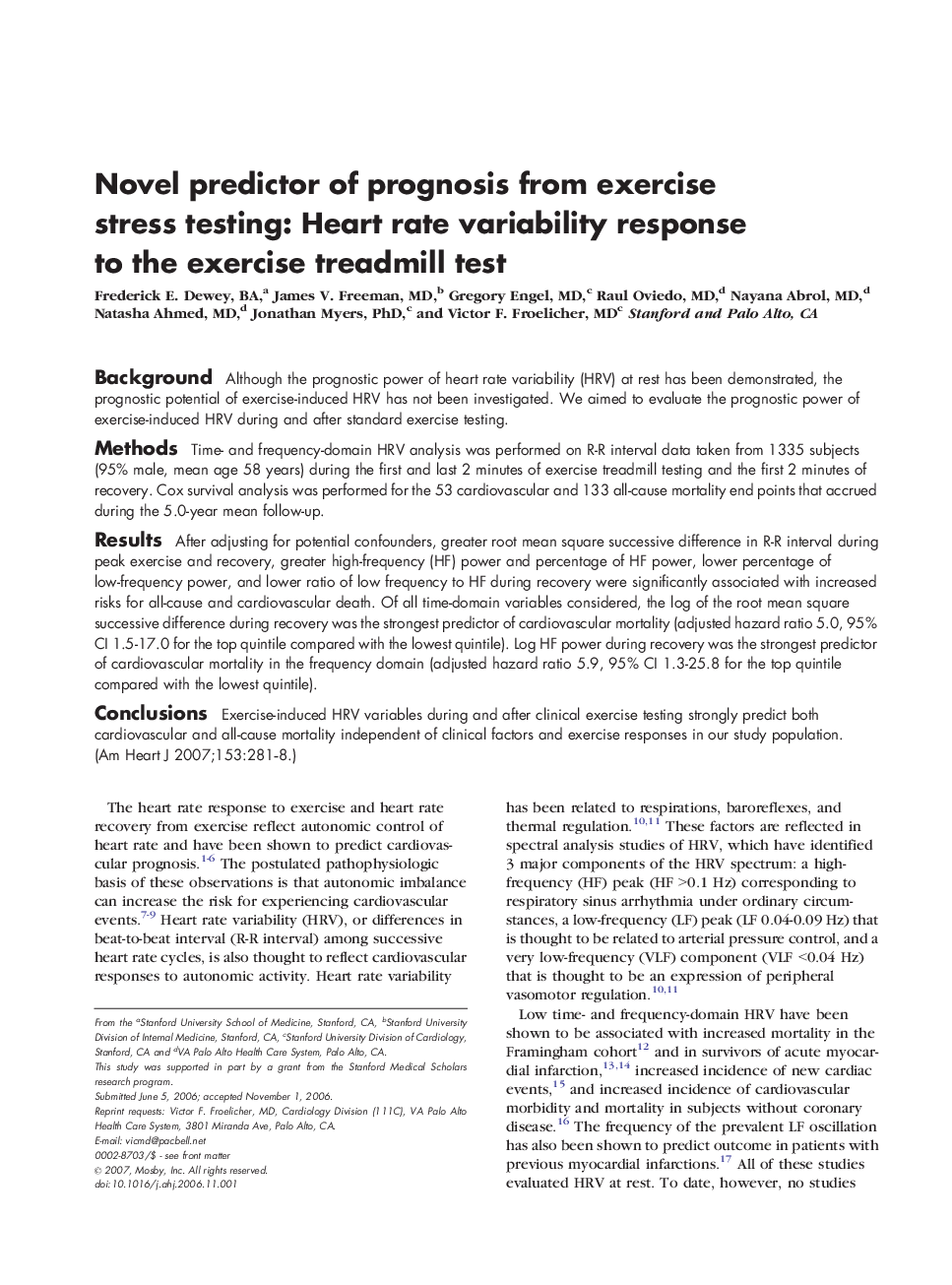| Article ID | Journal | Published Year | Pages | File Type |
|---|---|---|---|---|
| 2850032 | American Heart Journal | 2007 | 8 Pages |
BackgroundAlthough the prognostic power of heart rate variability (HRV) at rest has been demonstrated, the prognostic potential of exercise-induced HRV has not been investigated. We aimed to evaluate the prognostic power of exercise-induced HRV during and after standard exercise testing.MethodsTime- and frequency-domain HRV analysis was performed on R-R interval data taken from 1335 subjects (95% male, mean age 58 years) during the first and last 2 minutes of exercise treadmill testing and the first 2 minutes of recovery. Cox survival analysis was performed for the 53 cardiovascular and 133 all-cause mortality end points that accrued during the 5.0-year mean follow-up.ResultsAfter adjusting for potential confounders, greater root mean square successive difference in R-R interval during peak exercise and recovery, greater high-frequency (HF) power and percentage of HF power, lower percentage of low-frequency power, and lower ratio of low frequency to HF during recovery were significantly associated with increased risks for all-cause and cardiovascular death. Of all time-domain variables considered, the log of the root mean square successive difference during recovery was the strongest predictor of cardiovascular mortality (adjusted hazard ratio 5.0, 95% CI 1.5-17.0 for the top quintile compared with the lowest quintile). Log HF power during recovery was the strongest predictor of cardiovascular mortality in the frequency domain (adjusted hazard ratio 5.9, 95% CI 1.3-25.8 for the top quintile compared with the lowest quintile).ConclusionsExercise-induced HRV variables during and after clinical exercise testing strongly predict both cardiovascular and all-cause mortality independent of clinical factors and exercise responses in our study population.
